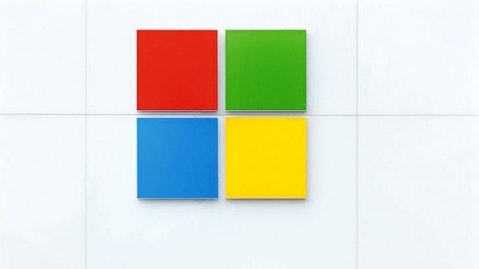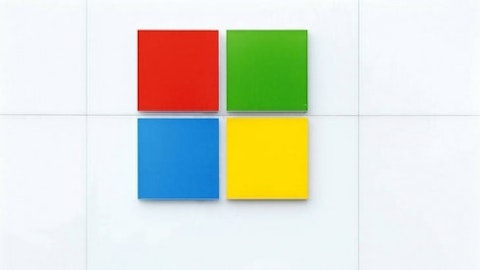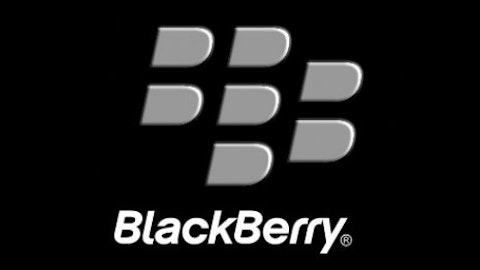In this article, I will talk about three of the most compelling opportunities on the Dow Jones Industrial Average. So read closely, because there are opportunities even among the whales.
Let’s start with Microsoft Corporation (NASDAQ:MSFT)
Microsoft Corporation (NASDAQ:MSFT)’s stock price struggled back in February due to estimates of declining computer demand. Windows 8 upgrade licenses were able to make up for the company’s decline in revenues, however.
The problem that investors face when it comes to Microsoft Corporation (NASDAQ:MSFT) is that it is pretty hard to determine the future growth potential of the company. Certain segments such as Skype, entertainment, mobile, and servers should be able to grow significantly in the coming years. The Windows segment should be hit with some difficulty, though, because of declining tower and laptop PC demand.
That being the case, in a previous article I tried my best to outline the future potential of Microsoft Office 365. I believe that the cloud software suite is going to be the primary growth driver of the company as it opens it to a new user ecosystem and the emerging market economies at the same time.
Because of this, I was able to forecast that the company may be able to generate an additional $10 billion in net income per year by 2017. Because Investors should be snapping up the stock as it trades at a pretty reasonable valuation. I believe that Microsoft Corporation (NASDAQ:MSFT)’s consolidated profit could grow to be above $35 billion from its current $16 billion. The company may be able to double its net income again.
The company’s stock currently trades at a 17.8 earnings multiple and pays out a 2.66% dividend yield. The company’s valuation is relatively cheap when compared to the potential growth. The stock also offers a compelling dividend for all those who are seeking some much needed refuge from the bond market.
The financials are a good place to start
Believe it or not, running a bank does not require that much overhead expense. It is becoming more common for work to be concentrated by fewer and fewer people. The technological sophistication of computers is making it possible to reduce the size of the workforce. Going forward, it is likely that process-driven innovation will allow for Bank of America Corp (NYSE:BAC) to employ fewer people.
Because of this, Bank of America Corp (NYSE:BAC) CEO Brian Moynihan believes that it can drive some of its net income growth through a reduction in head count. The company will be reducing its expenses by $8 billion through 2015. It’s earnings growth in its most recent quarter was driven by a decline in loan loss allowances, which decreased from 3.61% in the first quarter of 2012 to 2.49% in the first quarter of 2013. The company also reported a decline in net charge-offs, falling from 1.8% in the first quarter of 2012 to 1.2% in the first quarter of 2013. The decline in loan-related losses helped the bank to grow earnings.
Around 57% of the bank’s assets are composed of assets that are below a BBB rating. Bank of America Corp (NYSE:BAC) is well-positioned because higher-rated (low-risk) securities are likely to fall due to the end of quantitative easing. Lower-rated securities pay higher interest rates, which may be able to offset the mark-to-market decline in both bonds and mortgage backed securities.
Analysts on a consensus basis anticipate the company to grow earnings by 23.39% on average over the next five years. The company’s valuation is a little high at a 41.3 earnings multiple.
Consumer goods
The Procter & Gamble Company (NYSE:PG) doesn’t have a portfolio of killer app products coming along, nor is there some amazing overnight success story to be had here. However, the company does what it does best. It sells products that consumer need (keyword is need.) The company sells some of the most basic necessities of life like toilet paper, mouth wash, shaving cream, laundry detergent, and other home goods.
The company really hopes to drive its earnings growth by improving its net profitability. In a previous article, I tried my best to estimate the total contribution from revenue growth and cost-cutting. I arrive at the conclusion that because the company has plans of cutting out $10 billion in spending and hopes to generate an additional $992 million in net income from sales growth, the total growth in the company’s earnings could be approximately $11 billion over the next three years (the company currently earns $10.7 billion in net income.) If the company grows sales at 3% and is able to cut back on spending by $10 billion, it could double its earnings over the course of just three years.
Now this is talking purely in terms of hoped-for outcomes, of course. We have no way of knowing how effective the company will be at cutting costs and growing its net income. If that assumption proves correct, however, then the company’s current 15.8 earnings multiple is actually reasonable. The company also pays out an additional 3.13% dividend yield.
Conclusion
Microsoft Corporation (NASDAQ:MSFT) will grow its revenues through product extension and development, resulting in an increase in net profit. Bank of America Corp (NYSE:BAC) and The Procter & Gamble Company (NYSE:PG) are more dependent on cost-cutting for earnings growth than Microsoft Corporation (NASDAQ:MSFT). Cost-cutting is an acceptable strategy for growing earnings, and shareholders tend to pay a higher earnings multiple for companies that announce restructuring.
The three companies I’ve discussed here have a dependable growth strategy going forward. Because of this, I believe they have the most upside potential on the Dow Jones Industrial Average.
The article The Best Stocks on the Dow Jones Industrial Average originally appeared on Fool.com.
Alexander Cho has no position in any stocks mentioned. The Motley Fool recommends Bank of America and Procter & Gamble. The Motley Fool owns shares of Bank of America and Microsoft. Alexander is a member of The Motley Fool Blog Network — entries represent the personal opinion of the blogger and are not formally edited.
Copyright © 1995 – 2013 The Motley Fool, LLC. All rights reserved. The Motley Fool has a disclosure policy.





